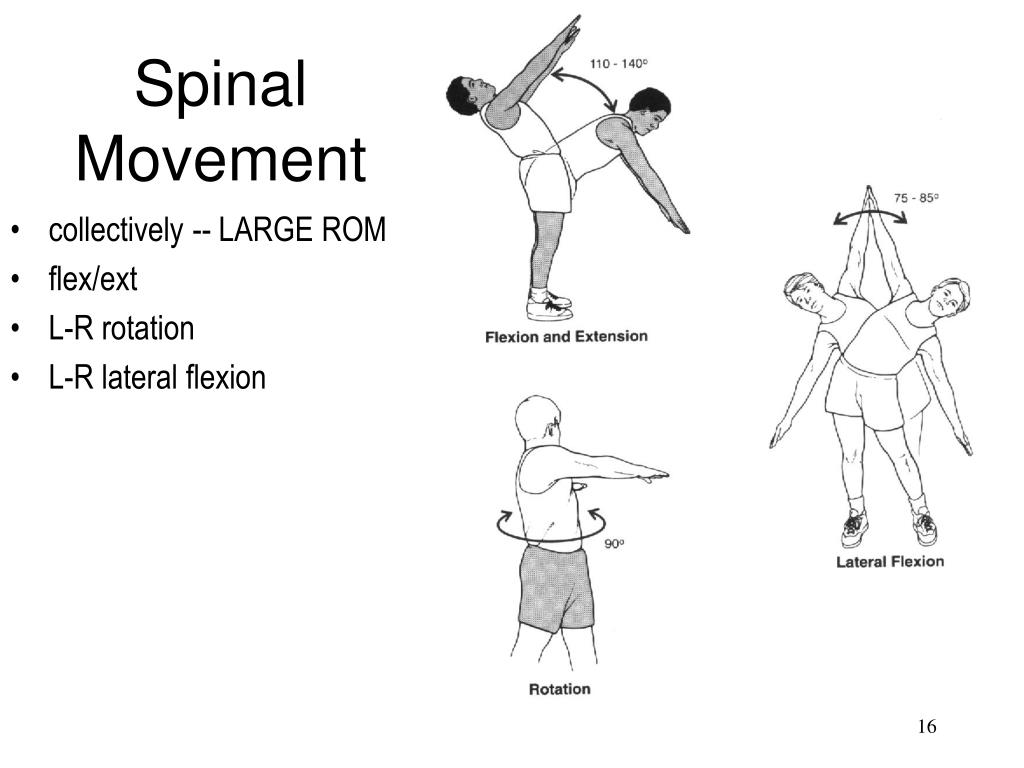

For the vertebral column, flexion (anterior flexion) is an anterior (forward) bending of the neck or body, while extension involves a posterior-directed motion, such as straightening from a flexed position or bending backward. What motions involve increasing or decreasing the angle of the foot at the ankle?įlexion and extension are movements that take place within the sagittal plane and involve anterior or posterior movements of the body or limbs. Watch this video to learn about anatomical motions. Body movements are always described in relation to the anatomical position of the body: upright stance, with upper limbs to the side of body and palms facing forward. Movement types are generally paired, with one being the opposite of the other. There are many types of movement that can occur at synovial joints (Table 1). Overall, each type of synovial joint is necessary to provide the body with its great flexibility and mobility. While the ball-and-socket joint gives the greatest range of movement at an individual joint, in other regions of the body, several joints may work together to produce a particular movement. The type of movement that can be produced at a synovial joint is determined by its structural type. Each movement at a synovial joint results from the contraction or relaxation of the muscles that are attached to the bones on either side of the articulation.

Synovial joints allow the body a tremendous range of movements. Identify the joints that allow for these motions.Define the different types of body movements.Normative values of cervical range of motion for both children and adults: a systematic review.Ĭopyright © 2020 Elsevier Ltd. Overall, reference values for measuring active cervical ROM is unclear for most measurement devices. Only the normative data for active cervical ROM using the CROM device seems to be useful. This systematic review revealed that although a large number of studies assessed normative data for active cervical ROM, the methodological quality of most studies was low and the heterogeneity between studies was high. Only data from studies evaluating the CROM device and Zebris could be pooled. Twenty-five studies were rated as being of "low risk of bias". Data were extracted from 55 articles using 16 different measurement devices.
#Cervical range of motion norms full#
When possible, data were pooled.įrom 2151 unique hits, 217 articles were selected for full text assessment, after which 162 articles were excluded. A mean value was re-calculated for the total group in case data were presented per gender per age-category only. Methodological quality of the included studies was assessed using an adapted version of the QUADAS. Included studies had to involve healthy subjects in which active cervical ROM was assessed or when determining normative values was the aim of the study. Electronic searches included EMBASE, MEDLINE, Web of Science, Cochrane, CINAHL and Google Scholar databases from inception to August 2018. Currently available normative values differ across studies, perhaps due to (the measurement properties of) the devices used.Ī systematic review according to PRISMA guidelines was conducted. Interpretation of outcomes necessitates having normative data per age category. To synthesize studies reporting normative values of active cervical range of motion (ROM) in healthy children and adults.Įvaluating active cervical ROM is part of routine assessment of patients with neck pain.


 0 kommentar(er)
0 kommentar(er)
